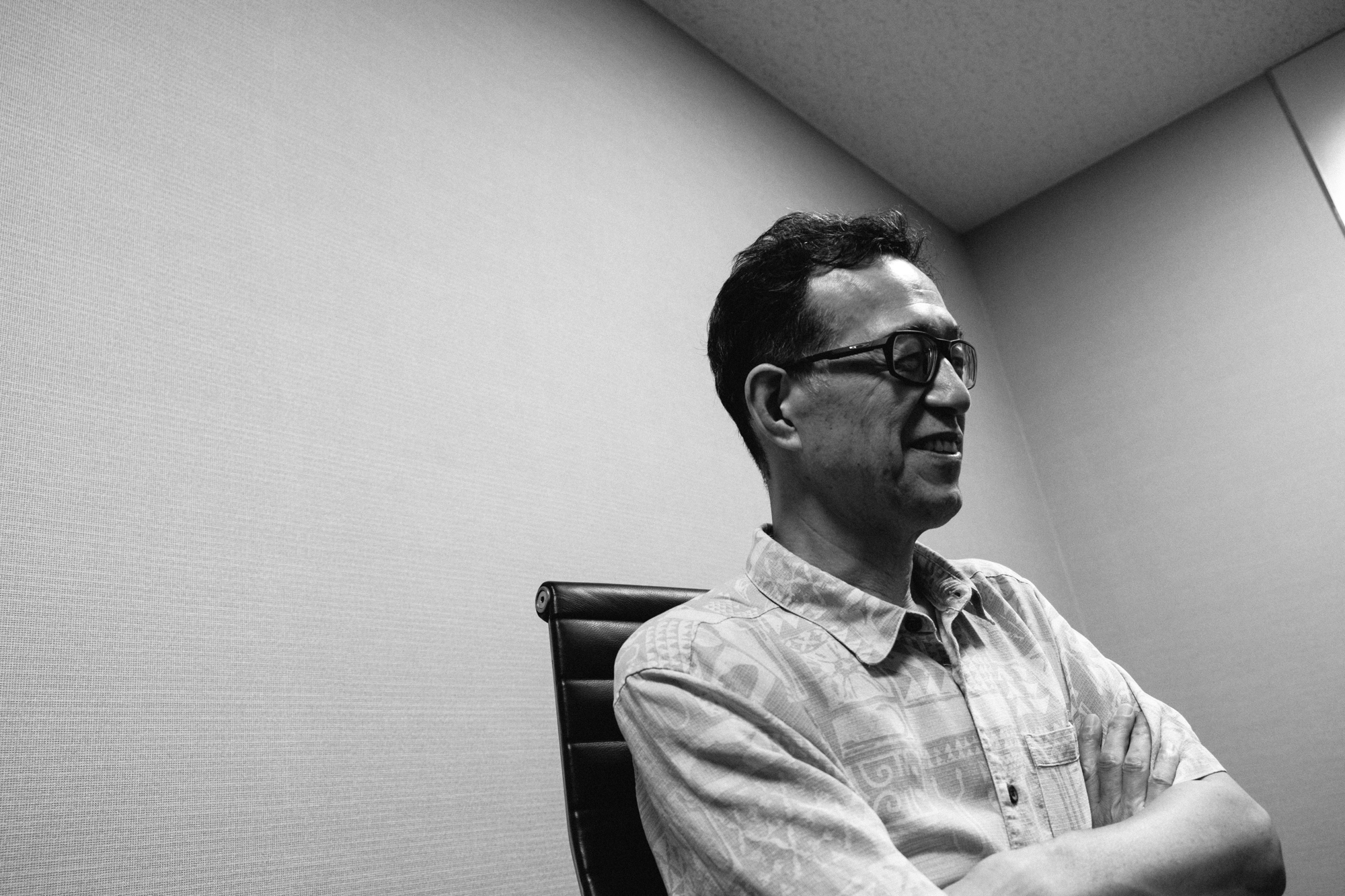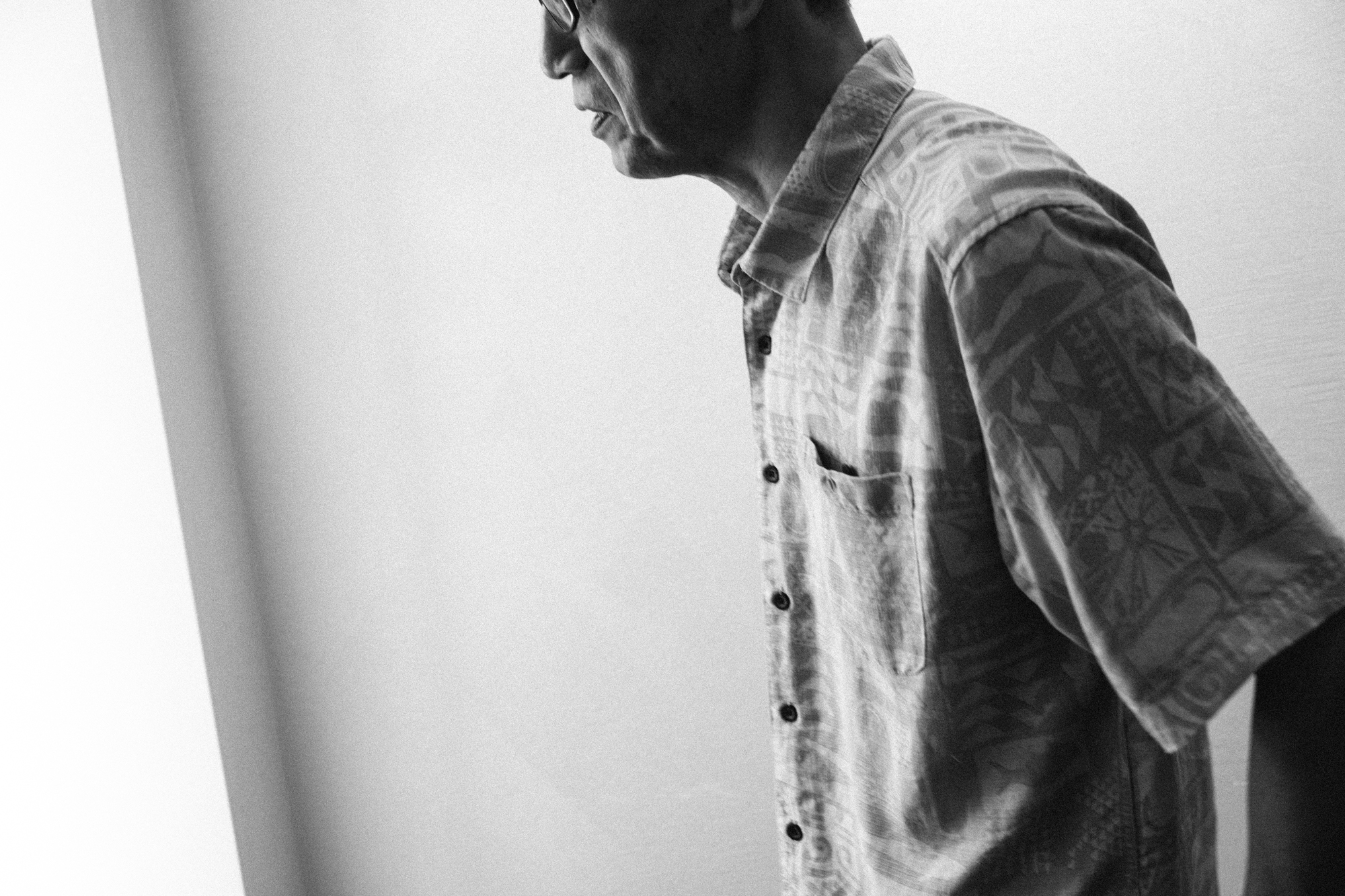
The Compatibility of Shirow’s Works With 3D CG According to Shinji Aramaki: The appeal of “Ghost in the Shell,” unveiled by the latest technology, and its future prospects #02
Text: Satoshi Asahara / Photo: Yusuke Yamatani“I had followed Shirow since he was a dojin fan-manga creator,” says Shinji Aramaki. He directed the 2004 film Appleseed, which garnered attention as the world’s first 3D CG-animated film to incorporate motion capture technology. His proficiency in mechanical designs, coupled with his expertise in enhancing the allure of the original manga through cutting-edge technologies, is evident even in collaborative directorial efforts, such as his work with Kenji Kamiyama on Ghost in the Shell: SAC_2045. Both are works that Aramaki wanted to undertake willingly, but what makes Shirow Masamune’s creations so compelling that inspires such passion from him? In this discussion, we inquired about his enthusiasm for the original works, delving into the challenges and advantages of production work, and exploring the possibility of a sequel in the future.
#02 Insisting on "Full 3D CG, Even the Backgrounds"
-What made you want to try using 3D CG as a means of expression for Ghost in the Shell: SAC_2045 after its success with Appleseed?
Shinji Aramaki (“Aramaki”): The broad reason is the same as for Appleseed, in that I wanted to express space using fully 3D CG in detail. To begin with, there’s a lot of different 3D CG animations now, and of those, a lot use traditional backgrounds like a normal anime, even if they have 3D characters. But I insist on making even the background in 3D, because that lets us move the camera more freely. Even in a scene with just characters talking in a small room, you can show things in all sorts of different ways by moving the camera both vertically and horizontally. If you use regular backgrounds, then you need to make a lot of them to move the camera, which causes a lot of complaining on the team. *laughter* A 3D background lets us convey more information and also feels like the approach that suits Shirow’s work.

-Do you tend to change the structure of the story dynamically from the storyboard stage?
Aramaki: Yes, it does. You would normally set the layout precisely and produce the details from there, but I always move the structure around. The way the characters will move gets set from the motion capture stage when people act it out, but I can set the camera angles later if I make the background 3D. That lets me do things like switch to a close-up of a character’s hands in a scene where I had originally planned a full-body shot.
-What was the course of events that led to your becoming director of Ghost in the Shell: SAC_2045 ?
Aramaki: I directly asked Production I.G.’s representative, Ishikawa. I said, “Please let me!” It had already been planned, and the team had been informed some time ago. One time, Ishikawa came to the “Yubari International Fantastic Film Festival,” which I was attending, and we got the chance to have dinner together there. I thought it was the perfect chance, and I told him I wanted the role. “I’m certain that Ghost in the Shell would be suited to fully 3D CG video!” I pushed that idea, and he seemed interested, but he asked, “Would you direct it alone, Aramaki?” Then I got the sense that if I said yes, my odds of getting to do the movie went down. *laughter* Then it came to me, and I said, “I want to work with Kamiyama.” Kamiyama and I weren’t unknown to each other, and I felt like we would have good synergy if we tag-teamed the project. Ishikawa found the idea interesting, and the project went into motion.
-How was your chemistry with Mr. Kamiyama as a fellow creator?
Aramaki: It was intriguing, since we had our own parts to it and our specialties and philosophies don’t precisely overlap. I’m confident about taking the lead on expression with 3D CG, but I’m not all that great at emphasizing a theme in a script. Kamiyama takes control of the script himself, so our strengths meshed really well, I thought. Kamiyama has led the S.A.C. series so far, as well as the actual scripts and stories. He had a broad structure in mind, and his team was central to the way we proceeded with scenario development. I was more involved in adapting that script into visual scenes.

-What were you particularly focused on getting right in Ghost in the Shell: SAC_2045 ?
Aramaki: Given it was early all-3D CG work, I was more hung up on the character POV shots than anything else. I wanted to take extreme care with how everything looked from each character’s perspective as we went ahead with things. We have all sorts of data displayed in front of Motoko and the others during the movie, and they each have different data visible depending on the scene and situation. You don’t need to be aware of that kind of point to follow the story, but it’s structured to be more fun if you follow it on a deeper level.
-You also had inventive and exciting character designs by Ilya Kuvshinov. How did you choose the team?
Aramaki: I think it was Ishikawa who first introduced me to Ilya. When I looked over his work, he had a lot of Japanese-style backgrounds, and Japanese-style high school-ish girls, and a unique appeal with a sharp, fresh feel. He had even done one of a girl who looked like Motoko, so I could easily envision his take and felt he was the right choice for our character designs. I recall the process of creating Motoko’s actual design being smooth, without major issues. I think we asked to make her a little bit shorter. Since free camera movement is your secret weapon in fully 3D CG, as I keep saying, it was hard to see her facial expressions at the angle full-body shots had to use when she was built like a supermodel. That led us to settle on a more familiar balance for this film.
-For the film, you added the original character Purin Esaki alongside the main cast of Batou, Togusa, and the rest of Public Security Section 9. Was the process fairly smooth when you were designing her and giving her a role?
Aramaki: I really worried over Purin as a character. First, it took time to settle on her name, and it was two steps forward and one step back regarding the origins of her name, too. Kamiyama may have seen this differently, but in my memory, her design solidified around the end of season 1. We intended to make 24 episodes all at once at the time, and we didn’t envision season 1 cutting off the way it did, either. Which is why her voice actress, Ms. Han (Megumi Han), was worried that people might hate her for the way things went when we finished the final season 1 dubbing. *laughter* As for why she felt that way and who Purin really is, you’ll need to check out the anime for that.
-I think the movie shows the positives of 3D CG in how it portrays action. I’m curious what led you to design the unique movements the post-humans do when they dodge bullets in it, though.
Aramaki: When we were moving ahead with the scenario, Kamiyama kept saying that there was no way to show that visually. We weren’t confident about making the scenes of baseline humans dodging bullets convincing, although we had several tricks that would work for full-body cyborgs. But Kamiyama said something like, “It’s your job to make it work.” When we were going ahead with motion capture prep for it, I spoke with the action coordinator, and they had a few suggestions on the point. One was a video that was sort of like a person doing a weird dance, and I felt like we could make it work by extrapolating from that.

-The battles between post-humans and Public Security Section 9 get even more complex in season 2, don’t they?
Aramaki: The staff had gotten familiar with the project by the end of season 1, and we were better at realizing our ideas. I feel like we successfully showed how advanced the post-humans were in several scenes, like with their hacking as well as the way they dodged bullets. But we really did worry about how they should move until we completed the first scene where one appears in season 1. The pressure was enough to give me stomach aches for a while. I think it took several years off my life. *laughter*
Continued to #03 A Vision of the Second Volume Inspired From a Certain Device
SHINJI ARAMAKI
Born October 2, 1960. Native of Fukuoka Prefecture. Began his career working in mechanical design while a university student. Mecha designer for TV anime works Genesis Climber MOSPEADA, Gasaraki, and “Astro Boy,” among other series. Director of the films Appleseed, Appleseed Ex Machina, “Harlock: Space Pirate, and “Appleseed Alpha. Co-director of the anime “Ultraman” and Ghost in the Shell: SAC_2045, currently streaming on Netflix.
